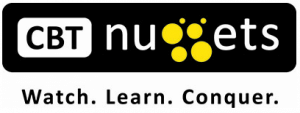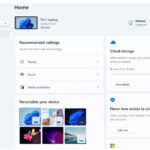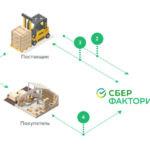Год выпуска: 2010
Производитель: CBT Nuggets
Автор: James Conrad
Продолжительность: 18:11:07
Тип раздаваемого материала: Видеоурок
Язык: Английский
Стоимость: 1999 рублей
Описание:
This video training with James Conrad covers Windows Server 2008, including designing active directory forests and domains, network access, and more.
Recommended skills:
Experience with enterprise administration
Experience with infrastructure design and global configuration
Recommended equipment:
Windows Server 2008
Related certifications:
Microsoft Certified IT Professional (MCITP): Enterprise Administrator
Related job functions:
Enterprise administrators
Passing Microsoft's 70-647 Enterprise Administrator exam is your final step towards earning Microsoft's premiere Server 2008 MCITP certification.
It says you're ready to implement new capabilities and higher security in a medium-to-large enterprise using the latest advances in Windows Server 2008 technologies. And once you've completed this terrific video training course from Microsoft expert James Conrad, you will be ready.
By the time you've finished watching James's fantastic course you'll have your servers running reliably and secure, and you'll be ready for the 70-647 exam.
All trademarks and copyrights are the property of their respective holders.
[wpspoiler name="Подробное описание" ]
1. Intro (00:07:30)
Lets talk a little bit about this training course as well as the MCITP certification exam.
2. Design Active Directory Forests and Domains (00:35:22)
Designing Core Identity and Access Management Components; Design Active Directory Forests and Domains; purpose of active directory; enterprise directory; internet directory; network operating system; reasons for single and multiple forests; reasons for single and multiple domains; administrative autonomy; administrative isolation; custom schema modifications; enterprise admins; domain admins; forest root; dedicated forest root; empty forest root.
3. Forest and Domain Functional Levels (00:36:21)
Designing Core Identity and Access Management Components; Design Active Directory Forests and Domains; Plan for Interoperability; inter-organizational authorization and authentication; forest and domain functional levels; Domain functional level; forest functional level; fine-grained password policy; forest trust; domain rename; linked value replication; rodc; knowledge consistency checker; KCC; intersite topology generator; ISTG; inetorgperson, DFS-R Sysvol replication; domain controller rename; LastLogonTimestamp; redirusr; redircmp; selective authentication; constrained delegation; authorization manager.D6
4. UPN and ADPREP (00:16:56)
Designing Core Identity and Access Management Components, design active directory forests and domains, user principal name (UPN), adprep, /forestprep, /domainprep, /gpprep, /rodcprep.
5. Trust Relationships (00:28:05)
Designing Core Identity and Access Management Components, design active directory forests and domains, intra-organizational authorization and authentication, Cross-forest authentication, manual trust, external trust, realm trust, UNIX kerberos v5 trust, forest trust, shortcut trust.
6. Active Directory Physical Topology (00:38:28)
Designing Core Identity and Access Management Components, Placement of servers, site and replication topology, repadmin /bridgeheads, intrasite replication, intersite replication, sites, connection objects, site links, bridgehead servers, site link cost, replication interval, replication schedule, subnets.
7. Global Catalog, Universal Group Membership Caching, Printer Location Policy (00:25:28)
Designing Core Identity and Access Management Components, Placement of servers, site and replication topology, global catalog, universal group membership caching, printer location tracking.
8. Read Only Domain Controllers (RODC) (00:39:08)
Design the Branch Office Deployment, Authentication Strategy, Server Security. Configure the Read-Only Domain Controller (RODC), dcpromo, advanced options, answer files, Universal Group Membership Caching (UGMC), global catalog, adprep /rodcprep, credential caching, cached passwords; administrator role separation, decommissioning domain controllers.
9. The Active Directory Administrative Model (00:41:12)
Design the Active Directory Administrative Model, delegation, group strategy, compliance auditing, group administration, organizational structure, auditpol.exe.
10. Enterprise-Level Group Policy Strategy (01:11:17)
Design the enterprise-level group policy strategy. group policy hierarchy and scope filtering, control device installation, authentication and authorization, organizational structure, organizational unity design, scope of management, order of inheritance, modify group policy scope, WMI filters, windows management instrumentation, software deployment using GPO, template files, adm files, admx files, central store.
11. Upgrade and Migrate Domains, Interoperability (00:33:43)
Plan for interoperability. inter-organizational authorization and authentication, application authentication interoperability, cross-platform interoperability, Designing support identity and access management components, cross-forest authentication, backward compatibility, object migration, active directory migration tool 3.1, ADMT, active directory federation services, AD FS, domain upgrade, domain restructure, domain upgrade-then-restructure, identity lifecycle manager feature pack 1, ILM FP1, metaverse, identity management for unix, password synchronization, subsystem for UNIX-based applications, SUA, server for NIS, services for NFS.
12. IP Addressing (00:55:43)
Planning network and application services, Plan for name resolution and IP addressing, IP addressing scheme, TCP/IP version coexistence, 128-bit addresses, 8 groups of hex characters, IPv4, IPv6, Link-local address, FE80, Unique-local, site-local address, global scope address, internet 2, anycast, transitioning to IPv6, transition richness, dual-stack routers, tunneling 6to4, tunneling 4to6, NAT Protocol Translation, NAT-PT, teredo.
13. DNS (01:01:09)
Plan for name resolution, internal and external naming strategy, naming resolution support for legacy clients, naming resolution for directory services. background zone loading, IPv6 support, primary read-only zone, global names zone, GNZ, WINS, dynamic update, netbios name, fully qualified domain name, fqdn, authoritative dns server, dnscmd, split dns, overlapping namespace, cname, isa server, primary zone, primary active directory-integrated zone, secondary zone, DomainDNSzones, ForestDNSzones, child domains, delegation, stub zone, nslookup, glue records, reverse lookup, forwarders, internet root, top level domain servers, TLD servers, caching only dns servers, conditional forwards, dynamic update, secure dynamic update, insecure dynamic update.
14. Network Access (00:46:51)
Training content; Design for Network Access, network access policies, remote access strategy, perimeter networks, server and domain isolation. Virtual private network, vpn, layer two tunneling protocol, l2tp, point-to-point tunneling protocol, pptp, secure socket tunneling protocol, sstp, eap, eap-tls, peap, ms-chap v2, network access protection, health policy, health registration authority, hra, health requirement server, NAP health policy servers, system health agent, remediation servers, antivirus definitions, restricted network, malware.
15. Terminal Services (00:52:50)
Plan for Terminal Services. Terminal Services Licensing, Terminal Services Infrastructure, Terminal Server Fram, terminal services license servers, terminal services gateway servers (TS Gateway), per user client access license, per device client access license, CAL, terminal services web access, terminal services connection authorization policies (TS CAP), terminal services resource authorization policies (TS RAP), terminal services session broker, windows system resource manager (WSRM).
16. Application Delivery (00:47:10)
Plan for Application Delivery, Application virtualization, presentation virtualization, locally installed software, softgrid, Microsoft system center application virtualization, management server, app-v, application virtualization client, application virtualization sequencer, port 554, firewall rules.
17. Business Continuity (00:54:41)
Plan for business continuity, service availability, directory service recovery. Network load balancing, NLB, clustering, quorum, witness, terminal server farm, web farm, isa server farm, flexible single master operation, operation master, pdc emulator, rid master, schema master, infrastructure master, domain naming master.
18. Software Updates (00:52:15)
Design for software updates and compliance management, patch management, patch management compliance, Microsoft update and windows update, windows server update services, WSUS, System center essentials 2007, SCE, system center configuration manager 2007, SCCM, system center operations manager 2007, SCOM.
19. Compliance Management (00:23:16)
Design for software updates and compliance management, security baselines, Microsoft baseline security analyzer, MBSA, security configuration wizard, SCW, SCCM baseline, auditing, WSUS.
20. Virtualization Strategy (00:25:03)
Design the operating system virtualization strategy, server consolidation, application compatibility, virtualization management, placement of servers, server consolidation, application virtualization, hyper-v, hyper-v clustering, system center virtual machine manager, iSCSI, fibre-channel san, FC-SAN, sandboxing, serial attached scsi, SAS.
21. Data Management and Access (01:02:03)
Data Design for data management and data access. Data security, data accessibility, data redundancy, data collaboration, Windows Sharepoint Services, WSS, Microsoft Office Sharepoint Services, MOSS, Distributed File System, DFS, Rights management services, RMS, BitLocker, Windows Server Backup, system state, authoritative restore, wbadmin, complete PC restore.
22. Designing a PKI Part 1 (00:37:49)
Design and Implement Public Key Infrastructure, Certificate lifecycle management, encryption, signing, hash value, sha-1, certificate templates V1, V2, V3, security requirements, business requirements, active directory, code signing, encrypting file system, EFS, message digest, signature function, private key, public key, S/MIME, clear signed, opaque signed, network device enrollment service, NDES, simple certificate enrollment protocol, SCEP, key length, key lifetime, algorithm.
23. Designing a PKI Part 2 (00:28:28)
Design and Implement Public Key Infrastructure, enterprise certificate authority CA, standalone certificate authority, root ca, subordinate ca, policy ca, issuing ca, internal ca, external ca, certificate template versions, V1, V2, V3.
24. Designing a PKI Part 3 (00:52:20)
Design and Implement Public Key Infrastructure, certificate revocation, certificate revocation list, CRL, authority information access AIA, CRL distribution point CDP, smart card enrollment, enrollment agents, certificate templates, autoenrollment, web server certificates.
25. What's New in R2: Intro (00:05:01)
An introduction training to what's new in R2
26. What's New in R2: Active Directory Management (00:55:32)
Windows Server 2008 R2 gives administrators a bevy of neat new tools to make Active Directory management easier. In this nugget we learn about enhancements to Server Manager. We also examine some new technologies, including the AD Best Practices Analyzer, the Active Directory Administrative Center, and the Active Directory Recycle Bin. We finish this nugget by learning about managed service accounts--Active Directory managers finally have the ability to assign service accounts to applications and services and let AD itself manage password changes!
27. What's New in R2: Group Policy Objects (00:28:35)
Creating and maintaining Active Directory Objects. Create and apply Group Policy objects, configure GPO templates, starter GPOs
28. What's New in R2: Certification Authorities (00:28:51)
Cross-Forest certification enrollment, Certificate Enrollment Web Service, Certificate Enrollment Policy Web Service, High-Volume Certification Authorities. Design and implement public key infrastructrure. Certificate services, PKI operations and maintenance
[/wpspoiler]



